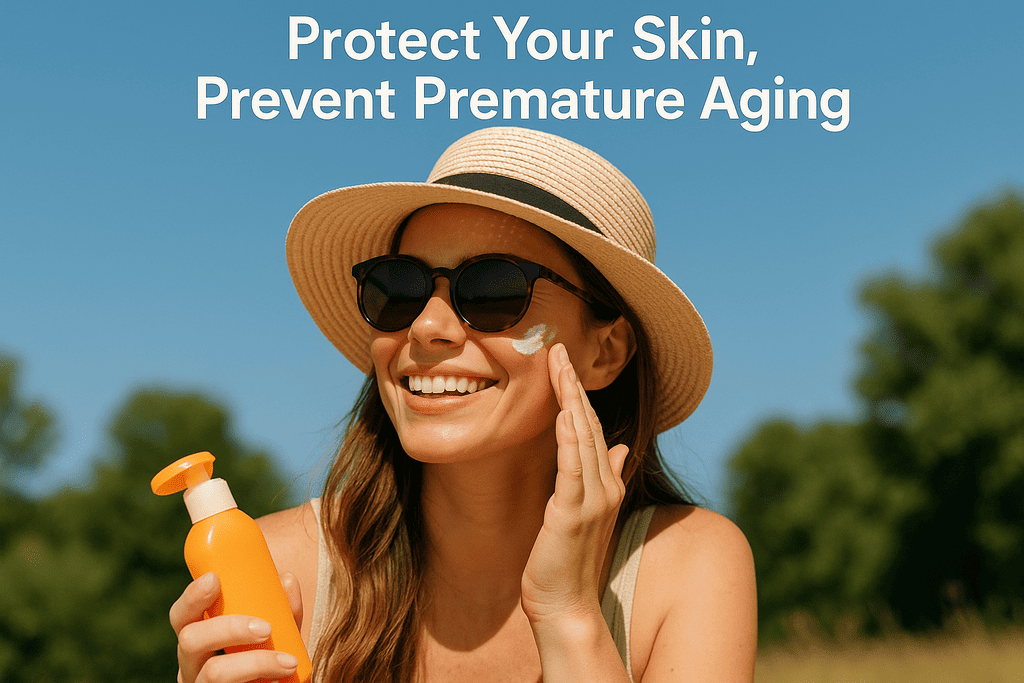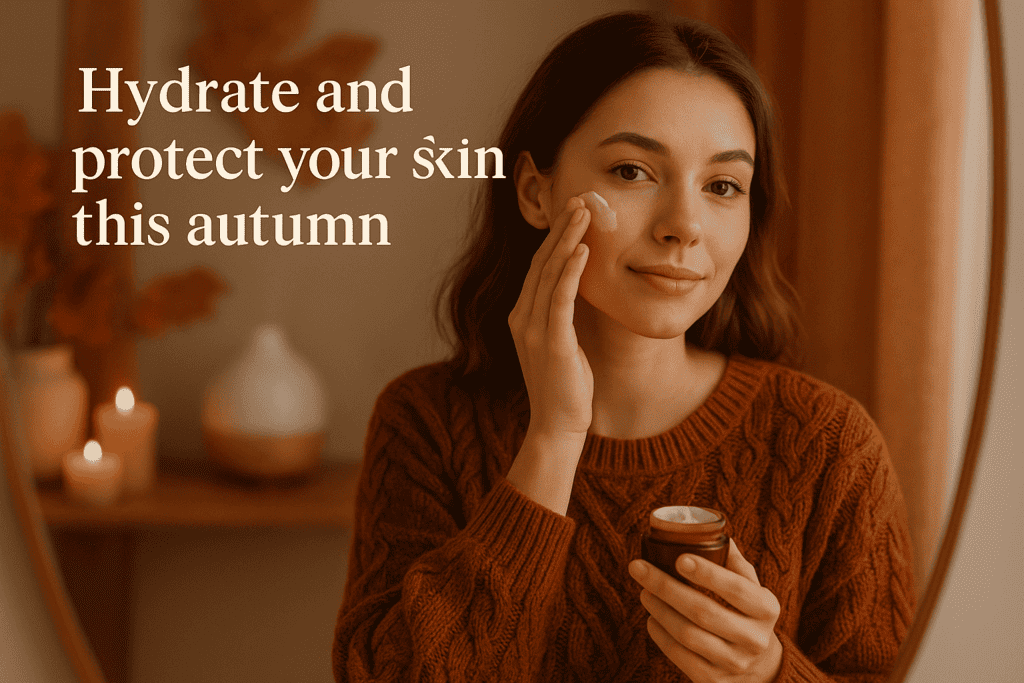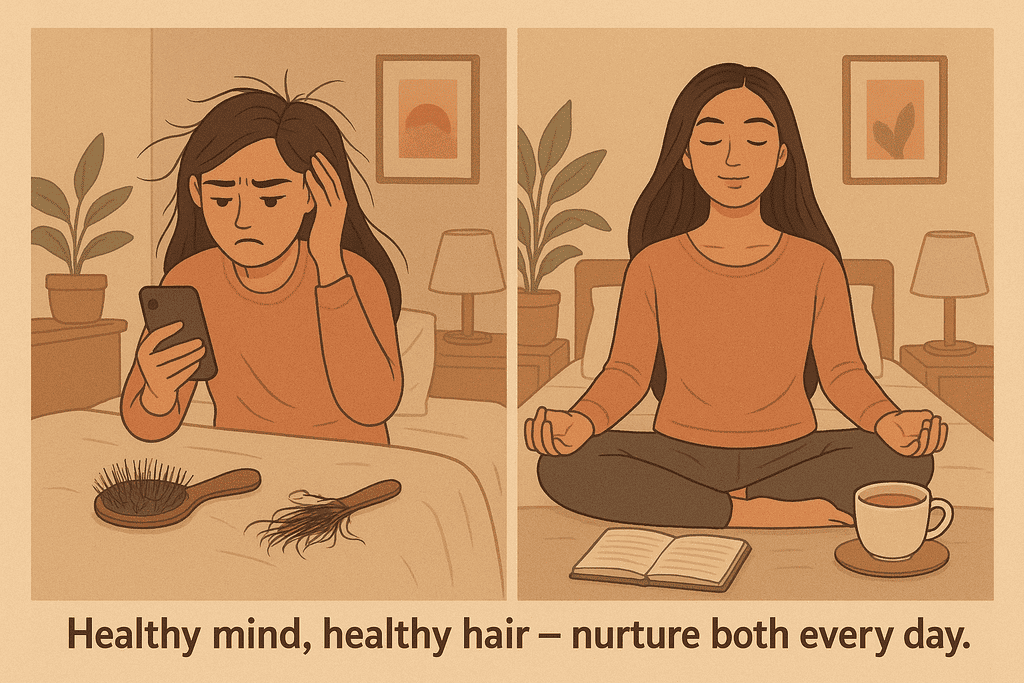
Introduction
Autumn brings crisp air, changing light, and a shift in how our skin and hair behave. As humidity drops, temperatures cool, and indoor heating ramps up, many people notice dryness, dullness, and increased sensitivity in the skin, along with seasonal hair shedding or more brittle hair. This guide explains why these changes happen, summarizes recent scientific findings, and gives practical, evidence-based skincare and haircare strategies to protect and nourish your skin and hair through the season. Throughout, I’ve highlighted SEO-friendly, reader-focused terms in bold to help this piece perform well in search results and be easily translatable.
Why Autumn Affects Skin & Hair : The Science (short summary)
- Lower humidity and cooler air can weaken the skin barrier and increase transepidermal water loss (TEWL), causing dryness and tightness. Recent dermatology reviews emphasize the role of ambient humidity and temperature in altering barrier function. PMC+1
- Seasonal shifts in sebum production and skin microbiome affect oiliness, acne flare-ups, and skin texture. Several studies have documented seasonal variation in facial sebum and microbial communities. PubMed+1
- Hair growth cycles show seasonal patterns. Many dermatologists and reviews note a rise in telogen (resting) hairs after summer, often causing more noticeable shedding in autumn; telogen effluvium (diffuse shedding) is a well-described clinical syndrome with many triggers. France Biotech+1

Body
1) Common Autumn Skin & Hair Issues
- Winter xerosis (dry skin): roughness, flaking, itching due to increased TEWL and lower hygroscopicity of the air. PMC
- Sensitive or reactive skin: barrier impairment can increase susceptibility to irritants and allergens. Wiley Online Library
- Seasonal acne or oil changes: sebum production shows regional and seasonal variability — some people see changes in oiliness and acne patterns in fall. PubMed
- Seasonal hair shedding: increased hair in the telogen phase often peaks late summer–early autumn, making shedding more noticeable. Nutritional changes, UV damage, and scalp health also contribute. France Biotech+1
2) Evidence-based Skincare Strategies for Autumn
A. Restore and Protect the Skin Barrier
- Use moisturizers with barrier lipids (ceramides, cholesterol, fatty acids) and humectants (glycerin, hyaluronic acid). Barrier-repair approaches are recommended in recent clinical literature for restoring hydration and reducing TEWL. Wiley Online Library
- Favor cream or ointment textures over gels or foams in low-humidity months; they provide occlusion that reduces water loss.
- Gentle cleansing — avoid hot water and harsh surfactants that strip lipids. Use pH-balanced cleansers and limit very frequent washing. Research shows washing and temperature exposure influence TEWL and barrier assessments. PMC
B. Targeted Active Ingredients (what to look for)
- Ceramides — support cutaneous lipid matrix.
- Glycerin / Hyaluronic acid — humectants that draw and retain moisture.
- Niacinamide — reduces TEWL and helps sensitivity.
- Urea (low-concentration) — gently hydrates and exfoliates in drier skin.
Clinical reviews and trials on barrier-focused products report benefit for dryness and sensitivity. Wiley Online Library
C. Environmental & Lifestyle Adjustments
- Humidify indoor air to ~40–60% relative humidity to lower TEWL and help skin comfort. Studies on indoor winter environments link low humidity and low temperatures to decreased barrier function. ResearchGate
- Layer clothing and avoid long exposure to cold wind; protect hands and lips with occlusive balms and gloves.
- Continue sunscreen — UV exposure affects skin aging year-round and can influence sebum and microbiome dynamics. Sequential

3) Autumn Hair & Scalp Care
A. Understand Seasonal Shedding
- Seasonal shedding is typically physiological but may be accentuated by stress, nutritional deficits, or medical conditions. If shedding is sudden, diffuse, or prolonged, consult a dermatologist. StatPearls and dermatology references summarize telogen effluvium triggers and management. France Biotech
B. Practical Haircare Tips
- Protein and iron awareness: hair requires adequate protein, iron, zinc, and vitamins (notably vitamin D and some B vitamins). Address deficiencies with a clinician if suspected.
- Gentle handling: reduce heat styling and aggressive brushing during times of increased fragility. Use wide-tooth combs and low-heat settings.
- Scalp hygiene: maintain a balanced scalp microbiome — avoid over-washing but cleanse appropriately; use mild surfactants and scalp treatments when indicated. Seasonal microbiome shifts have been documented and may influence scalp conditions. PMC+1
C. Treatment Options If Shedding Persists
- Identify and treat underlying triggers (thyroid dysfunction, iron deficiency, medication side effects, major stressors). Dermatologists may recommend topical minoxidil in some cases or investigate for chronic telogen effluvium. France Biotech+1
4) Practical Routine — Morning & Evening (Autumn-Ready)
| Time | Skin Routine (Autumn) | Hair/Scalp Routine |
|---|---|---|
| Morning | Cleanse gently → Antioxidant serum (optional) → Moisturizer with ceramides → Sunscreen SPF 30+ | Gentle detangle → lightweight leave-in conditioner if hair is dry → protect from sun / wind |
| Evening | Remove makeup with oil cleanser (if used) → gentle cleanser → hydrating serum (hyaluronic/niacinamide) → Rich cream or occlusive on dry areas | Wash 2–3x/week with a mild shampoo → conditioning mask once weekly for moisture; avoid hot water |
(Table: quick reference — adjust frequency by skin/hair type and climate)
5) Key Points (SEO-friendly summary)
- Autumn skincare should prioritize barrier repair, humectants, and occlusives to reduce TEWL and prevent xerosis. PMC+1
- Indoor humidification and gentle cleansing are simple, effective interventions for seasonal dryness. ResearchGate
- Sebum and microbiome vary with seasons — tailor acne and oil-control strategies rather than over-drying the skin. PubMed+1
- Seasonal hair shedding is common; prioritize nutrition, minimize mechanical/thermal damage, and seek dermatologic evaluation if shedding is severe or persistent. France Biotech+1
Conclusion
Autumn’s cooler, drier days require a gentle, structured approach to skin and hair care. Focus on restoring the skin barrier, maintaining hydration, protecting from environmental stressors, and treating the scalp and hair gently. Many recent dermatology studies support barrier-focused moisturization, environmental controls (like humidifiers), and targeted nutrition for managing seasonal changes. If you notice sudden or severe changes — unexplained rashes, rapid hair loss, or persistent inflammation — consult a dermatologist or healthcare provider for targeted evaluation and treatment. With small adjustments to routine and environment, you can keep skin hydrated, resilient, and glowing, and maintain healthy hair through the autumn months.
References (selected scientific & medical sources)
- Green M. Transepidermal water loss (TEWL): Environment and seasonal effects (review). 2022. PMC. PMC
- Seo JY et al. Longitudinal study of the interplay between the skin barrier, microbiome and environment (2023). PMC. PMC
- Youn SW et al. Regional and seasonal variations in facial sebum secretions. 2005. PubMed. PubMed
- Hughes EC, StatPearls. Telogen Effluvium. 2024 (updated clinical reference). France Biotech
- Research review: Restoring Skin Hydration and Barrier Function: Mechanistic and clinical perspectives. 2025 (clinical review). Wiley Online Library
- Korea study / winter indoor environment effects on skin (2025 preprint/report). ResearchGate
- Meyer K. Evaluation of Seasonal Changes in Facial Skin With and Without Acne (2015). PubMed. PubMed
- Dolečková I et al. Seasonal variations in skin parameters of Caucasian women (2021). Wiley/Skin Res Technol. Wiley Online Library
- VeryWellHealth / ForHers articles summarizing seasonal hair shedding and studies (useful lay summaries). hers+1








